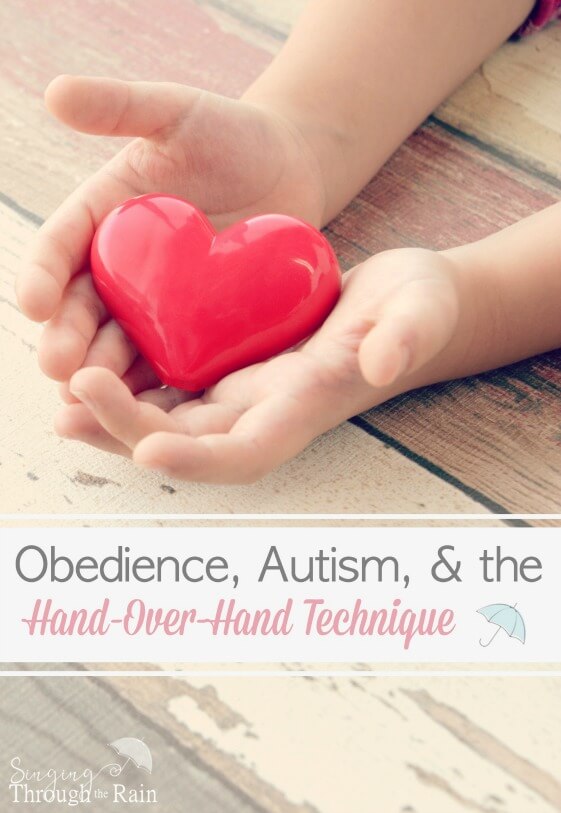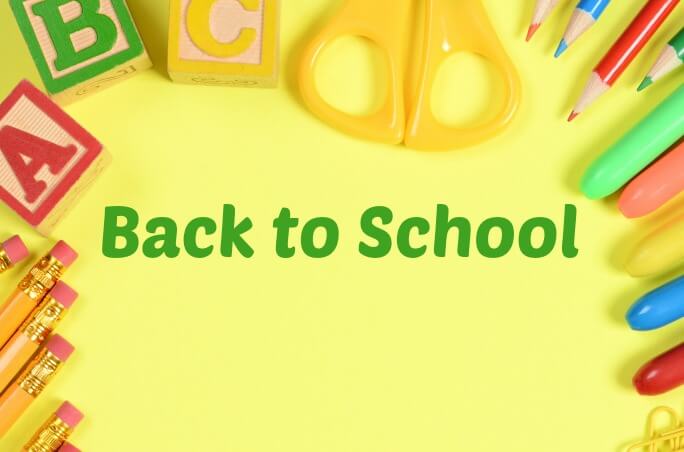Obedience, Autism, and the Hand-Over-Hand Technique
Note: I may earn money or products from the companies, products, or links mentioned in this post.
What do you think of when you hear the word obedience? I don’t know about you, but I was taught that first-time obedience was the only obedience that is acceptable. This means that whatever I was told to do I must do it the first time otherwise there would be consequences.
Now that I have my own children both who have autism and other special needs, I realize that this immediate obedience is not something they are always capable of.
I have watched my son stop and have to mentally process when instruction is given. Sometimes he needs a verbal reminder or for me to show him what needs to be done and that is why children with autism cannot be expected to have first-time obedience.
So what do we do? How do we teach our children to obey with as much love and respect as possible?
For us, we learned some techniques through our children’s behavioral therapists. My son has been in ABA (Applied Behavior Analysis) therapy for almost four years now and now my daughter needs it too. With both our children and even with what we’ve seen from other special needs parents, is that there is one specific tool and technique that can help teach what obedience is and what it means to obey.

How the Hand-Over-Hand Technique Teaches Obedience
Our ABA therapists have taught us a technique called “hand-over-hand.” This technique helps show children with autism exactly how to comply or obey. Here’s how it works:
1. The child is given a verbal warning or command.
This means that you have asked or told your child to do something. Here are a few examples:
- “Let’s go!”
- “It’s time to pick up your toys.”
- “You need to wash your hands.”
2. The child refuses to obey.
This means you have given your child the proper time to respond to and process what you are asking them to do and they are still refusing to comply or follow through. What this looks like:
- Throwing a fit because they don’t want to leave.
- Refusal to pick up toys.
- Won’t wash own hands.
3. Say, “I’m going to help you.”
This is where I believe the love and respect come through. The parent or therapist will calmly say, “I’m going to help you,” or “I’m going to help you obey.” This tells the child that they are not going to get away with what they are doing and that they will still have to follow through with what was asked of them.
4. Use Hand-Over-Hand Technique
This is where you will calmly and gently take your child’s hands and make them follow through with what you asked of them. This is what that looks like:
- Picking them up and making them walk. They will be limp, but you are still showing them they need to walk because it’s time to go.
- Taking their hands and making them pick up toys. Your hand will be on their hand, picking up each toy and then putting it away.
- Taking their hands, making them turn on on the water, get soap, and wash hands.
5. Stay calm and only use short verbal prompts.
During this time, you do not want to say much. You want to stay calm and not draw attention. Use short verbal prompts to remind them of what they need to do. For example:
- “It’s time to go.”
- “Pick up your toys.”
- “Wash your hands.”
6. Give tons of praise.
Depending on where your child is with this technique (if they are new to it or if they have been learning it for awhile), they may start willingly obeying and following through with the original command after you have started to make them. If that is the case, then you can let go of their hands and praise them for their obedience. Others may need your full hand-over-hand help until they have completely followed through with the task.
Here’s a few examples of giving praise after the task:
- “Good job walking!” or “Thank you for walking to the car.”
- “I like the way you are cleaning up your toys.” or “Great job cleaning up your toys!”
- “Yay, now your hands are clean!” or “You did a great job cleaning your hands!”
The hand-over-hand technique shows the child with autism that you will take the time to make sure they obey and follow through with what you asked. Praising them afterwards, shows them that they can do whatever it is you were asking.
The hand-over-hand technique has been used a lot in our house to teach obedience, but it is also a great technique that can help with teaching life skills to children with autism. Hand-over-hand can help show kids how to use zippers, tie shoes, and much more!
What do you think of this technique? Have YOU ever used the hand-over-hand technique?






I’m thankful we didn’t have thank you use this technique much with my son, but we did some and it was effective. It’s definitely best to use it early because there’s no way that would work once a kid reached a certain size/weight.
Oh yes I totally agree. Use it when they are young and they should learn quickly what it means to obey!
What a great idea! Wished I’d known about this when my son was younger, as I did lots of yelling to get him to obey.
Just wondering if you would recommend this hand-over-hand technique older kids with Autism. My son is 10 {almost 11}. He has a hard time with obeying me {most of the time} because he wants to do what he wants to do. He throws a lot of tantrums and screams at me when I ask him to clean up or stop an activity.
Just wondering if this technique is modified for older kids because I think something like this might make him more angry. {He might feel insulted.}
Hi Becky,
I agree it’s hard not to yell in frustration when we don’t know what else to do. I have been there many times. To be completely honest, I am not sure about it for older kids. I want to say it could work, but my kids are ages 6 and 2 so they are younger and my 6 year old knows the technique from when he was young so he doesn’t need at as much now. I wis I had answers for you. I can ask our ABA therapists and try to get back with you.
I have used this technique a lot and it is very effective.. I have used it with a wide variety of ages, also with children of different shapes and sizes upto 10 years of age. I would definitely recommend trying it.
This is kind of messed up and teaching children, especially ones with disabilities who are at a higher risk of sexual assault, that they have no body autonomy and need to blindly obey, could be detrimental to their well being in the future